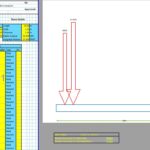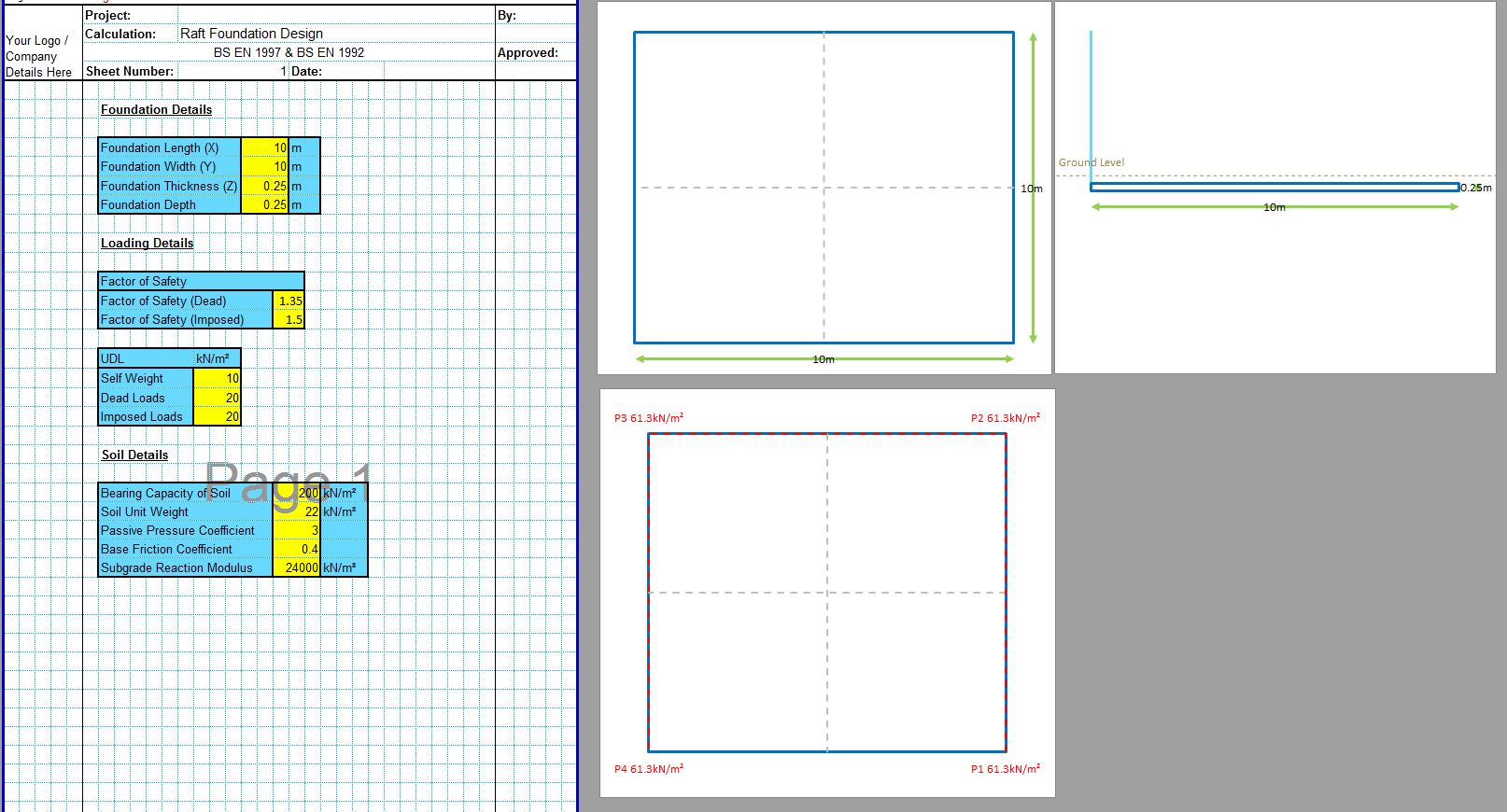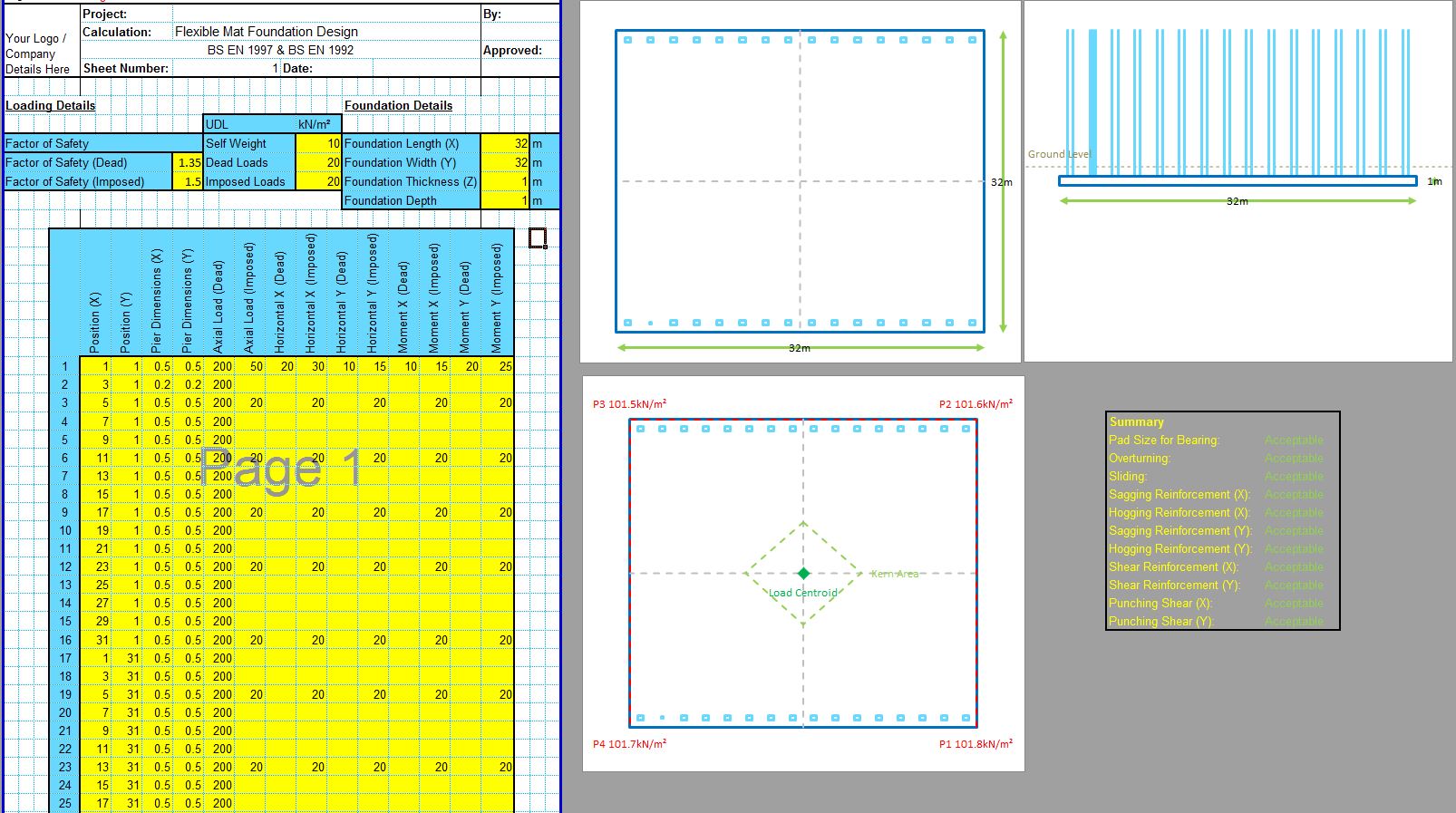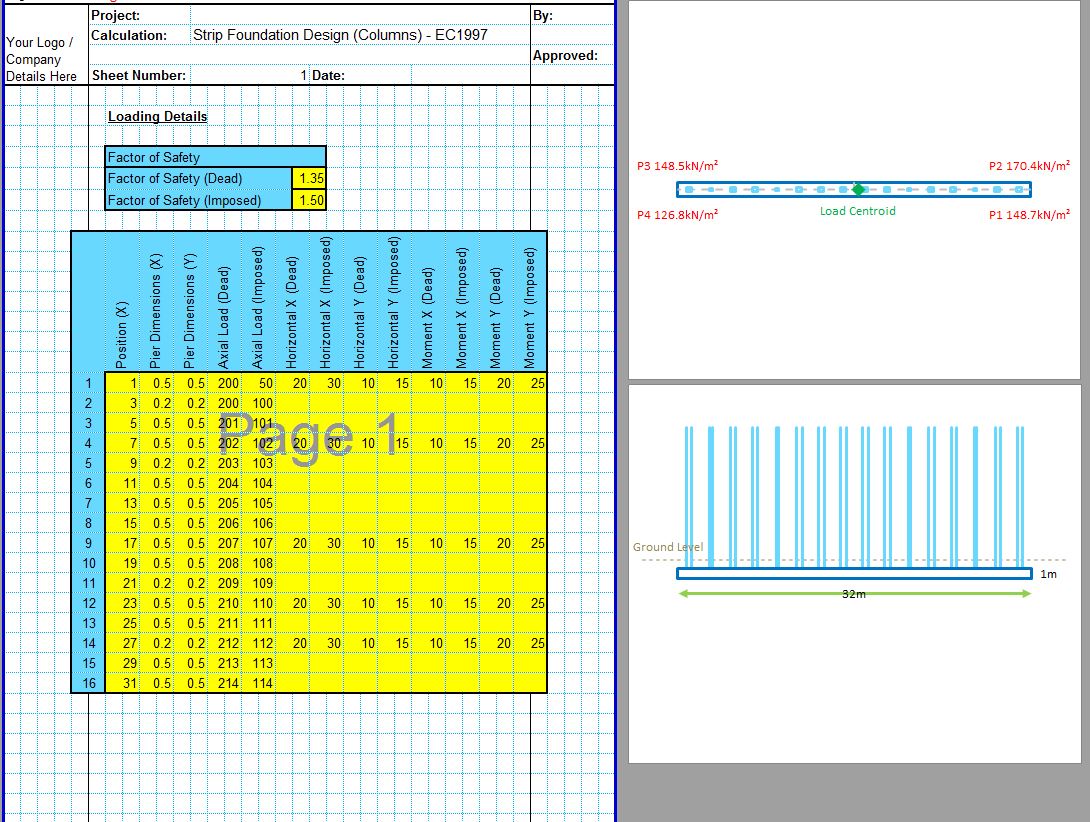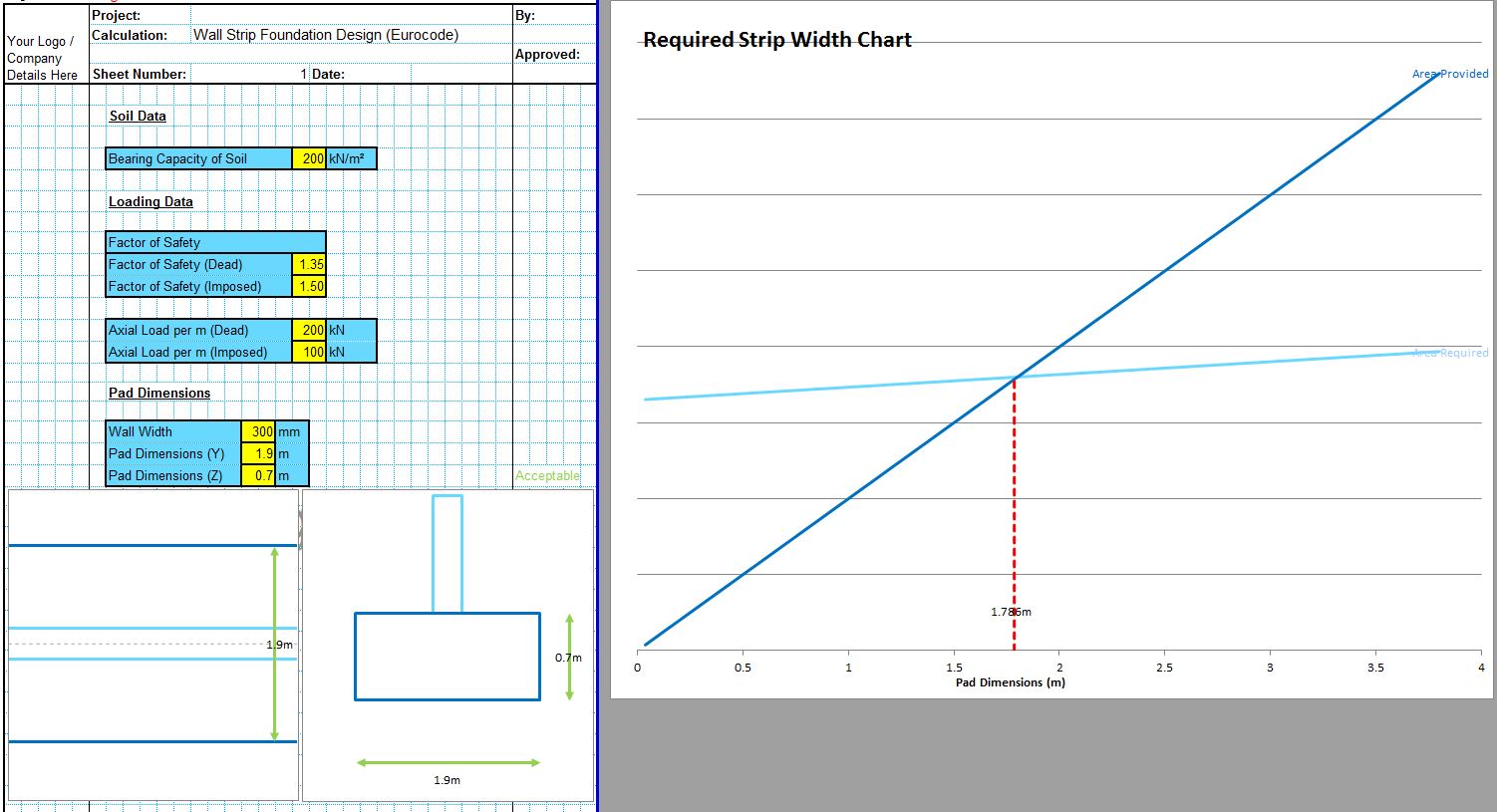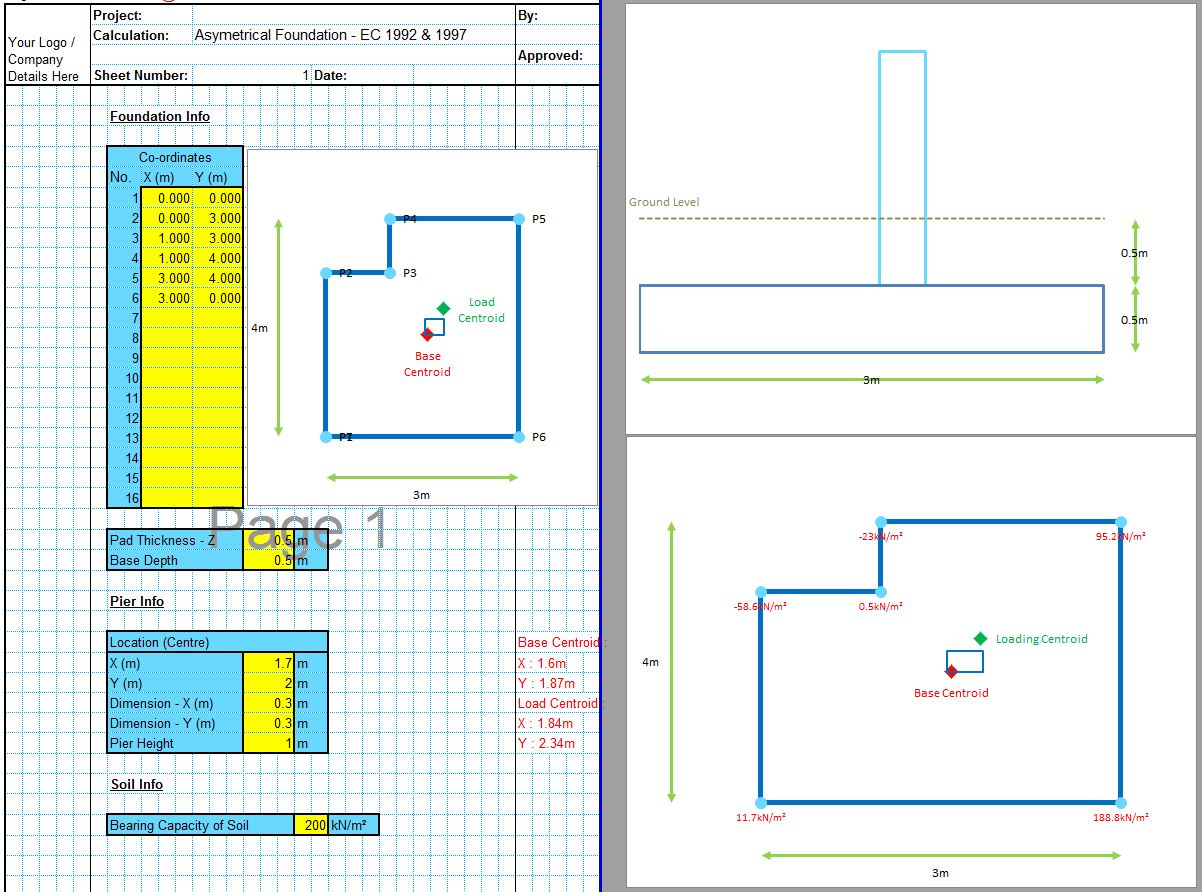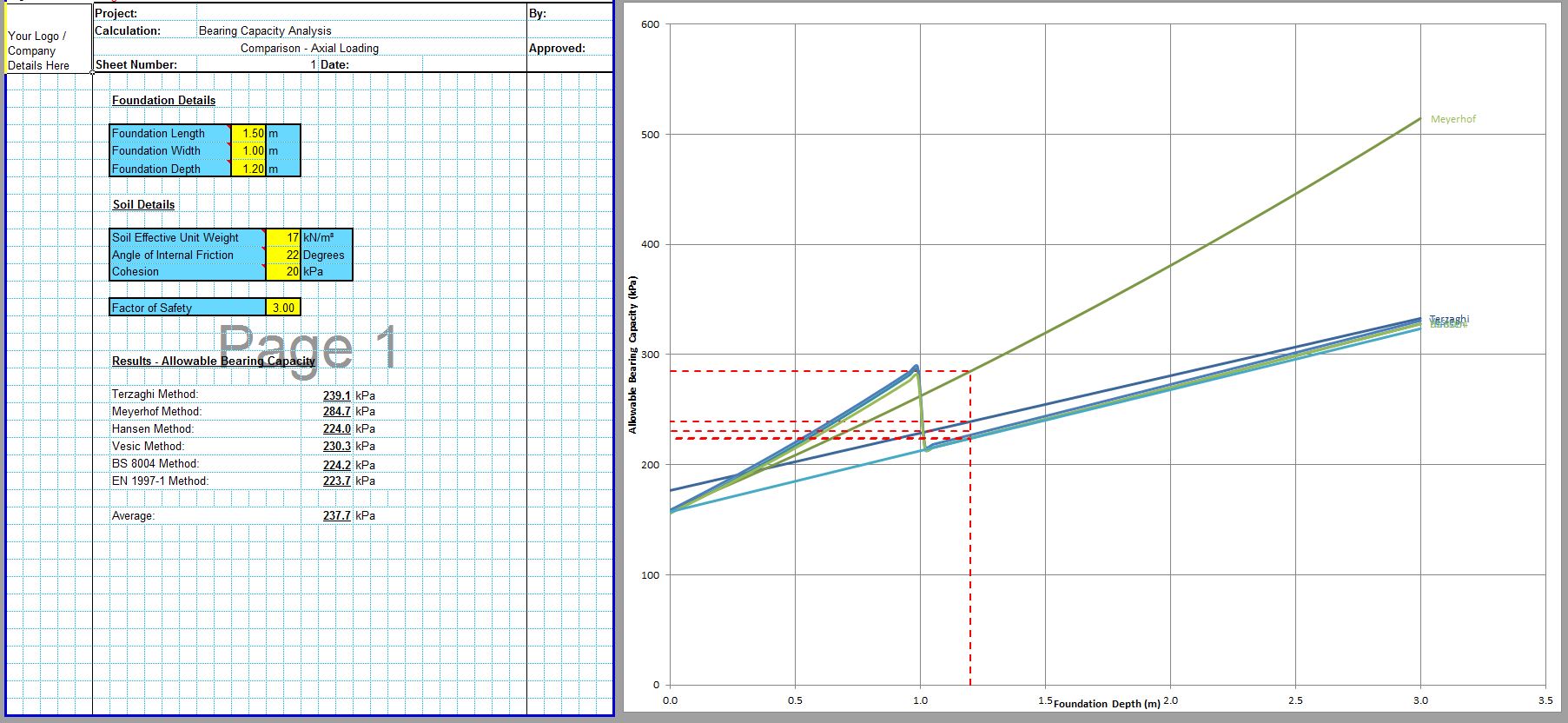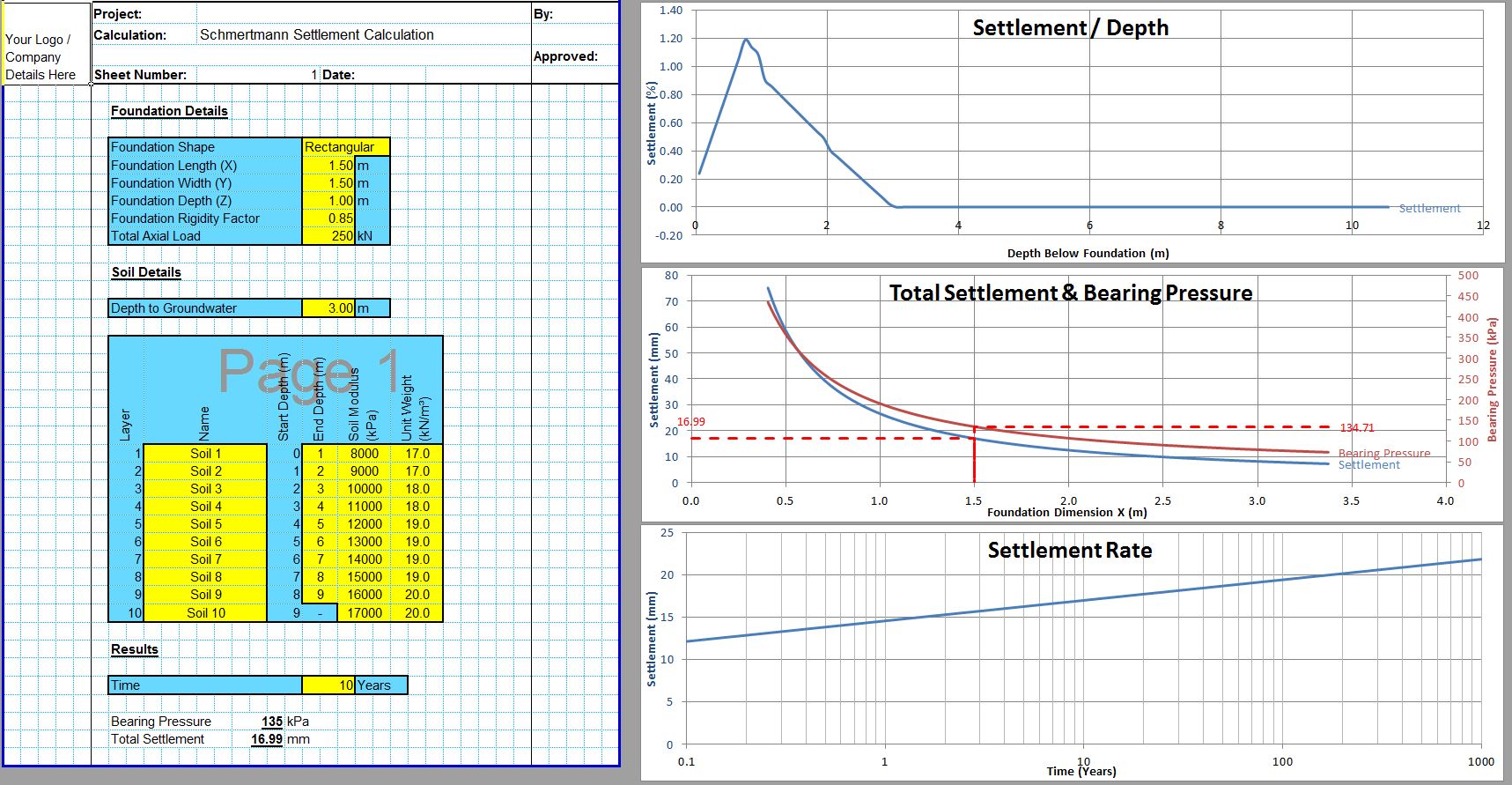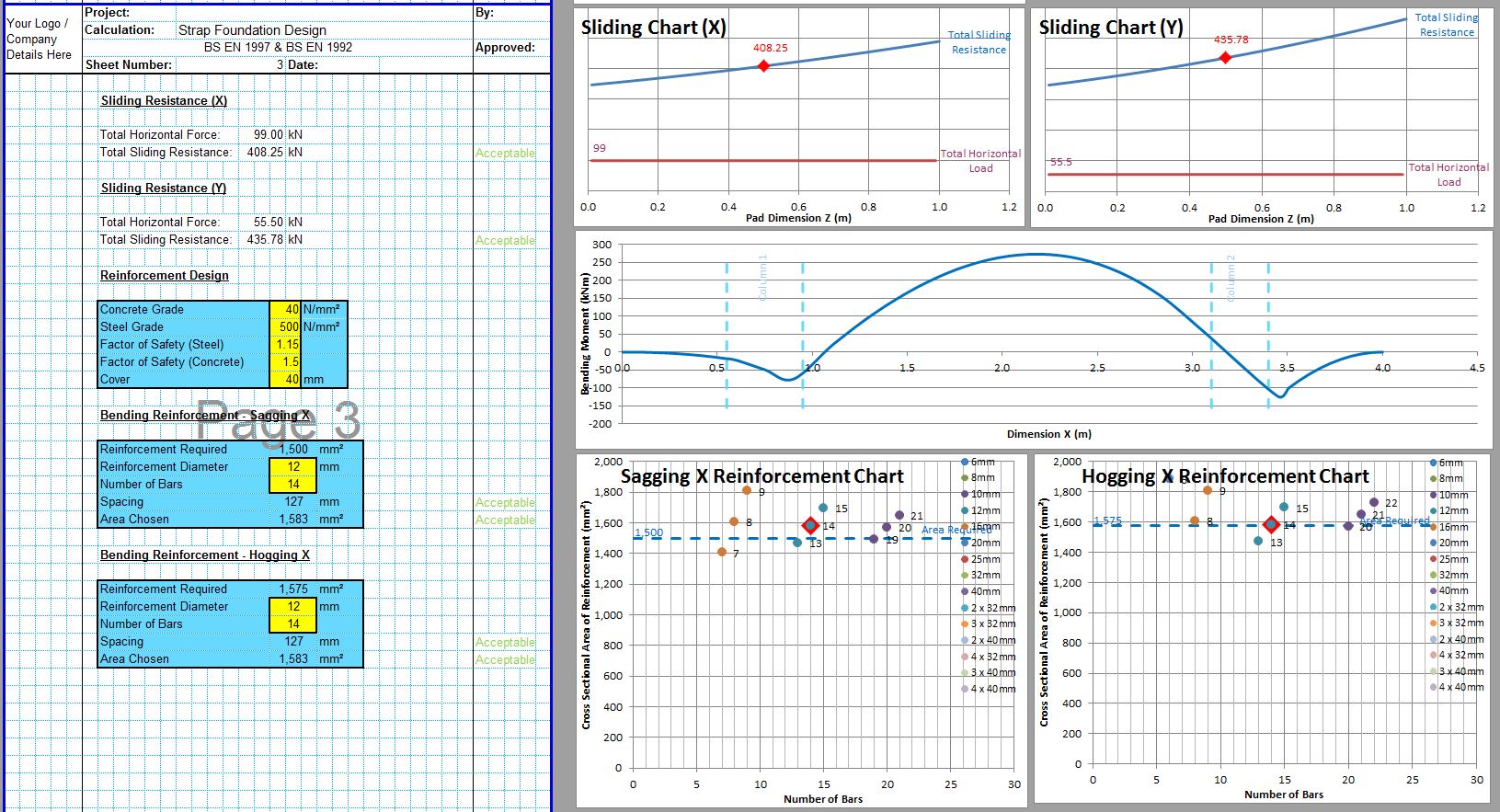The CivilWeb Beam On Elastic Foundation Spreadsheet is a powerful spreadsheet which can be used to complete a beam on elastic foundation analysis. This theoretical analysis can be used for the design of large foundations, concrete pavements, slabs on grade and any other design situations where a beam is supported by the ground. The spreadsheet completes the calculation instantly, saving the designer many hours of work on every analysis.
The CivilWeb Beam On Elastic Foundation Spreadsheet can be purchased at the bottom of this page for only £20. Or our Linear Foundation Design bundle includes three spreadsheets (Strip Footing Design, Wall Footing Design and Beam on Elastic Foundation Analysis) for only £30.
Alternatively the Foundation Design Suite includes all 12 of our foundation design spreadsheets allowing the design of any common foundation type. This is our best value bundle and can be purchased at the bottom of this page for only £50 (a discount of 80%).
Beam On Elastic Foundation Analysis
A beam on elastic foundation analysis can be useful in a number of different engineering fields including foundation design, pavement design or any steel beams which are supported by the ground.
The CivilWeb Beam On Elastic Foundation Spreadsheet completes an analysis using the beam on elastic foundation theory. This models the support provided by the soil as a series of elastic springs with a known stiffness. This is also known as a Winkler foundation. This theoretical model is not very accurate since soils do not behave as a linear elastic material. The reaction of soil is highly non-linear which makes it difficult to model accurately.
However most real life foundations or concrete slabs will not stress the soil sufficiently to activate the soils non-linear properties. If the bearing pressure beneath a foundation or concrete slab is well below the bearing capacity of the soil (as it should be), then the soil will behave in a roughly linear elastic way. In these cases the inaccuracies inherent in the beam on elastic foundations model will not have a major effect on the results of the analysis.
The beam on elastic foundation relies on the beam being relatively flexible. In most cases concrete foundations are small enough to be modeled as rigid bodies. However for large mat foundations or long strip or wall footings the concrete foundation can be large enough to act as a flexible body.
The CivilWeb Beam On Elastic Foundation Excel Spreadsheet includes a useful analysis of the length of the beam and the relative stiffnesses of the beam and soil to determine whether the conditions allow the beam to behave in a flexible manner or not. The spreadsheet advises the designer whether the beam is flexible, semi-flexible or rigid. This allows the designer to determine whether the beam on elastic foundation model is suitable or whether a more traditional simply supported or cantilever analysis would be more appropriate. A simple spreadsheet such as the CivilWeb Beam Analysis Spreadsheet can be used when the model is deemed to be rigid.
Beam On Elastic Foundation Excel Spreadsheet - Inputs
First the designer must input the beam details. This includes the length, stiffness and inertia of the beam (width is not required as this is a 2d analysis). Next the design must input the loading conditions. Often this will be simply a universally distributed load (UDL) however point loads are also allowed by the spreadsheet.
The designer must also input the soils design parameters which includes the soil stiffness. This is taken as the modulus of subgrade reaction which can be determined from a plate bearing test or similar site investigation.
The CivilWeb Beam On Elastic Foundation Calculator then builds the beam on elastic foundation model and completes the analysis. The spreadsheet returns results for the maximum bending moment, shear forces, deflection and bearing pressure beneath the beam. These results can be taken forward into a concrete or steel beam design programme such as the CivilWeb Concrete Beam Design Spreadsheet.
The Beam On Elastic Foundation Calculator also calculates the bending moment, shear force, deflection and bearing pressure all along the beam and presents this information to the designer in the form of a series of graphs. These show the designer at a glance exactly where along the beam the maximum forces occur. They also allow the designer to see the type of loading which the beam is being subjected to and whether there are any areas of negative bearing pressure for example which may be important in concrete slab design.
CivilWeb Beam On Elastic Foundation Spreadsheet
The CivilWeb Beam On Elastic Foundation Spreadsheet can be used to complete a complex beam on elastic foundation analysis for concrete slabs, foundations or any other members supported by the ground or similar elastic foundation. The spreadsheet includes unique analysis tools which show the designer exactly how large the maximum bending moments, shear forces, deflections and bearing pressures are and exactly where along the beam they occur. This makes it easy for the designer to see exactly how the beam will behave under load. The results of this analysis can be taken forward to another design program or spreadsheet.
Buy the CivilWeb Beam On Elastic Foundation Spreadsheet here for only £20.
Or purchase our Linear Foundation Design bundle includes three spreadsheets (Strip Footing Design, Wall Footing Design and Beam on Elastic Foundation Analysis) for only £30.
Or buy our best value bundle, the full Foundation Design Suite including all 12 of our foundation design spreadsheets at a discount of 80%.
Download Free Trial Version
To try out a fully functional free trail version of this software, please enter your email address below to sign up to our newsletter.
Other Foundation Design Spreadsheets;
Foundation Design Spreadsheet Suite
Our full Foundation Design Suite includes all 12 of our foundation design spreadsheets for only £50 (80% discount).

